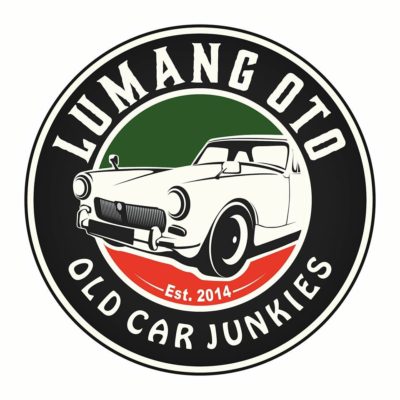You could be a truck person, an American muscle car hot rodder, or you could be in to the Japanese car tuning  crowd, one thing I notice is that when it comes to the Toyota FJ40 series, it seems to be a common denominator. Every aficionado will give the thumbs up of approval on this old Toyota. Although there are a bunch of 4-wheeler all-terrain vehicles out there, nothing seems to scream more rugged than the FJ40.
crowd, one thing I notice is that when it comes to the Toyota FJ40 series, it seems to be a common denominator. Every aficionado will give the thumbs up of approval on this old Toyota. Although there are a bunch of 4-wheeler all-terrain vehicles out there, nothing seems to scream more rugged than the FJ40.
As famous as the Land Cruiser FJ40 is, it was in the Philippines where its idea was conceptualized. And sadly, the intent was to build war machines during the World War II. In 1941, when the Japanese  army occupied the Philippines, they found a Bantam (the great granddad of the American Jeep) and they realized that the ruggedness of this machine will be an asset for the army so it was shipped to Japan. The Japanese government then ordered Toyota to build a light half ton truck for the military, so Toyota deconstructed the American Jeep down to its smallest detail and studied how it was engineered. This lead to the development of the AK10 “Jeep” in 1942. These light trucks were powered by a 2.2L 4-cylinder motor hooked a 3-speed manual gearbox. Unfortunately, there were not a lot of AK40 Jeeps that survived the war.
army occupied the Philippines, they found a Bantam (the great granddad of the American Jeep) and they realized that the ruggedness of this machine will be an asset for the army so it was shipped to Japan. The Japanese government then ordered Toyota to build a light half ton truck for the military, so Toyota deconstructed the American Jeep down to its smallest detail and studied how it was engineered. This lead to the development of the AK10 “Jeep” in 1942. These light trucks were powered by a 2.2L 4-cylinder motor hooked a 3-speed manual gearbox. Unfortunately, there were not a lot of AK40 Jeeps that survived the war.
After the World W ar II comes the Korean War and with Japan already an ally, the U.S. government ordered Willys and asked Toyota to help in building military light utility vehicles. Thus, the development of the Toyota “Jeep” BJ. By 1954, Willys which was the sole owner of the Jeep trademark, forced Toyota to change these post-war “Jeep” name to the Land Cruiser.
ar II comes the Korean War and with Japan already an ally, the U.S. government ordered Willys and asked Toyota to help in building military light utility vehicles. Thus, the development of the Toyota “Jeep” BJ. By 1954, Willys which was the sole owner of the Jeep trademark, forced Toyota to change these post-war “Jeep” name to the Land Cruiser.
Although it’s history was traced back in the 40s, the FJ40 series first came out in 1960 and continued its production until 1984 (In Brazil, production continued until 2001). The FJ40 came out with a bunch of body styles ranging from pick-ups to safari type vehicles, to 4 door SUVs, however, the most famous of them (at least in terms of numbers and survivors) are the 2-door compact SUVs.
came out in 1960 and continued its production until 1984 (In Brazil, production continued until 2001). The FJ40 came out with a bunch of body styles ranging from pick-ups to safari type vehicles, to 4 door SUVs, however, the most famous of them (at least in terms of numbers and survivors) are the 2-door compact SUVs.
There are several engine options for these front-engine-4-wheel-drive vehicles, but the diesel motor was among the favorite. And as they say, it’s Toyota, ergo, it will last forever. The FJ40s are work  horses and despite being “abusely” driven to all kinds of terrain, many of these cool vehicles have survived to date.
horses and despite being “abusely” driven to all kinds of terrain, many of these cool vehicles have survived to date.
With the growing market on classic vehicles, old FJ40s are now being revived and resurrected. These vehicles are still among the favorites of 4-wheel drive aficionados and where there are tough rugged terrains out there, I’ll assure you that you will one way or the other find an FJ40 driving there.
Unfortunately, when the principle of law of supply and demand kicks in, prices of these classic SUVs have been driven up north to the point of being unaffordable to many. Gone are the days where you could easily find one for cheap from your local classified ads. And although it’s hard to find a real all original low mileage example nowadays, there were a few that have crossed the blocks of some famous classic car auctions that has been hammered down for over a hundred thousand U.S. dollars. Yes – 6 digits American dollar. Well, I’m sure you can still find a lot of good deal project FJ40s out there. As long as you are willing to get your hands dirty of course.
Do you own an FJ40? Share it with the Lumang Oto Community. Want your ride to be featured? Click -> link for instructions.











Recent Comments